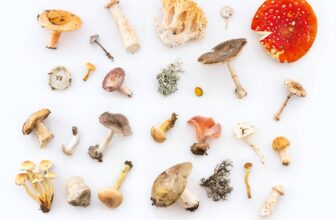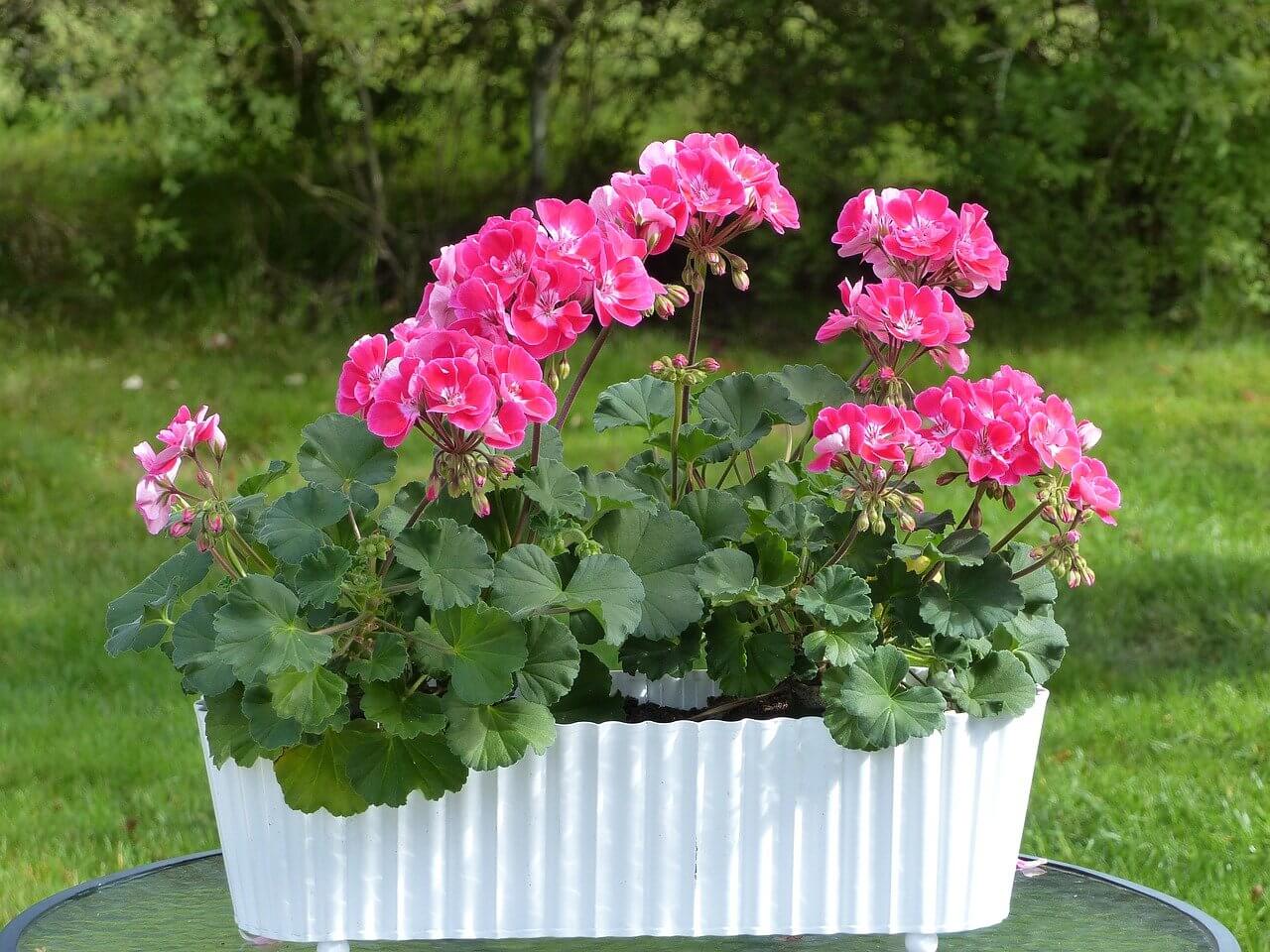
Table of Content
Geraniums are popular flowering plants loved by gardening enthusiasts around the world for centuries. They’re well known for their vastly colorful and diverse blooms.
Geraniums are hardy plants that have the ability to thrive in both indoor and outdoor environments. They’re also low-maintenance plants that are very easy to grow and care for which makes them a great choice for a beginner gardener.
Here’s what you need to know about planting and caring for your very own geraniums.
About Geraniums
Botanically named as “pelargonium”, geraniums belong to the family geraniaceae and are native to numerous tropical regions. Many species belong to southern Africa. These summer bloomers mostly generate flowers in white, red, pink, orange or purple, as well as in various other shades of single and multiple colors.
Depending on each variety, geranium shrubs can grow up to a height of 8 inches to 3 feet and have their own unique, evergreen foliage with different features. When crushed, the leaves emit a wide range of lovely scents. They also can be planted as ground covers and with other flowering plants such as nemesia and lavender.
Despite its name, “Geraniums” aka “pelargoniums” do not belong to the same genus of true geranium, which are commonly known as “cranesbills” or “hardy geranium”. While true geranium flowers have five similar and equal petals, pelargoniums have three lower petals and two different upper petals.
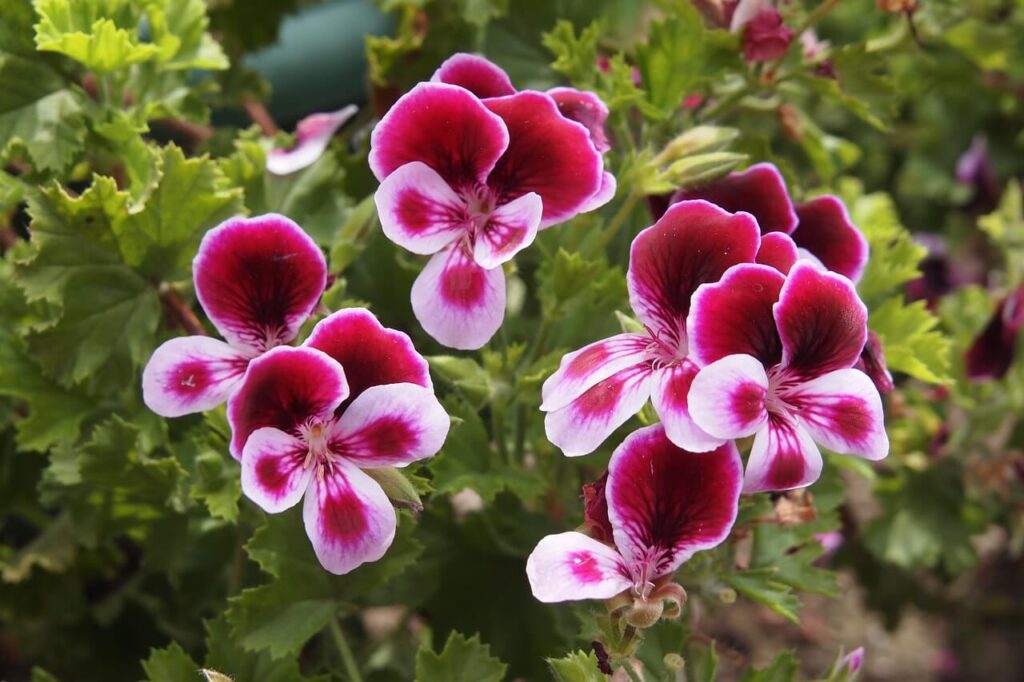
Unlike pelargoniums, hardy geraniums can withstand cold weather conditions whereas pelargoniums have to be taken inside in the winter season. However, due to the fact that they’re close relatives in the same plant family, many people mistakenly consider these two plants to be in the same genus but they’re really not.
Popular Types of Geraniums
Geraniums come in about 280 different species. Here’s a quick look at some of the most popular types found in gardens around the world:
Zonal Geraniums (Pelargonium zonale)
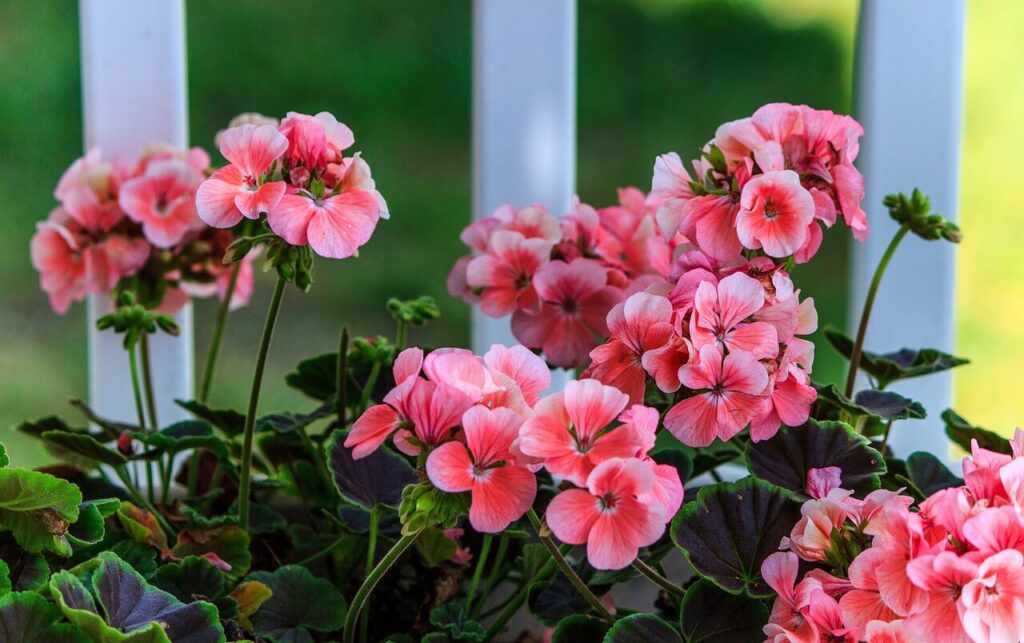
Native to Southern Africa in the Western regions of the Cape provinces, this variety of geranium is the most common type you will find. They produce sphere shaped flowers in a bunch of colors and shades including red, yellow, pink orange and even bi-colors. They have dark green foliage and some leaves have a green or burgundy mark on them.
Ivy Geraniums (Pelargonium peltatum)
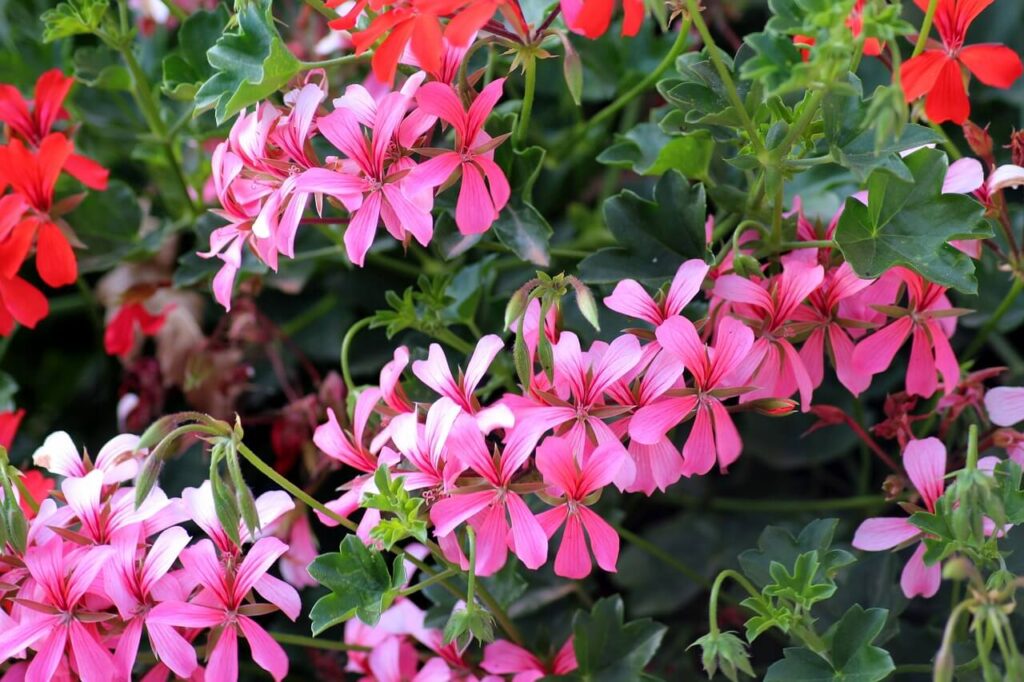
These scramblers are ideal for trellis and hanging baskets. They got their name due to the appearance of their leaves which resemble those of ivy vines with their shape and the bright green color. They produce flowers that grow in clusters of many colors and the petals are ruffled with whiskers on them.
Regal Geraniums (Pelargonium grandiflorum)
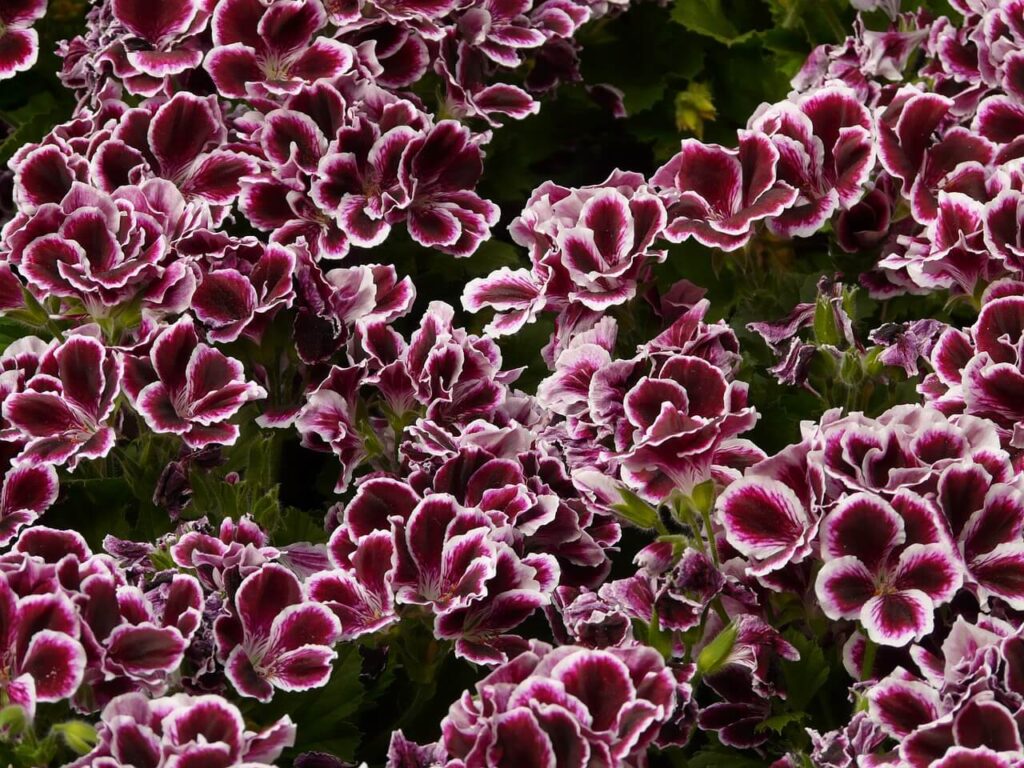
Regal geraniums, also known as ‘English pelargonium’ have velvety, scented leaves and large trumpet shaped blooms with six petals for each flower. They’re regarded as a symbol of “true friendship” which makes them popular gifts for friends. These geraniums were originally grown as seasonal indoor flowering plants, but they can also be grown outdoors.
Sweet Scented Geraniums (Pelargonium graveolens)
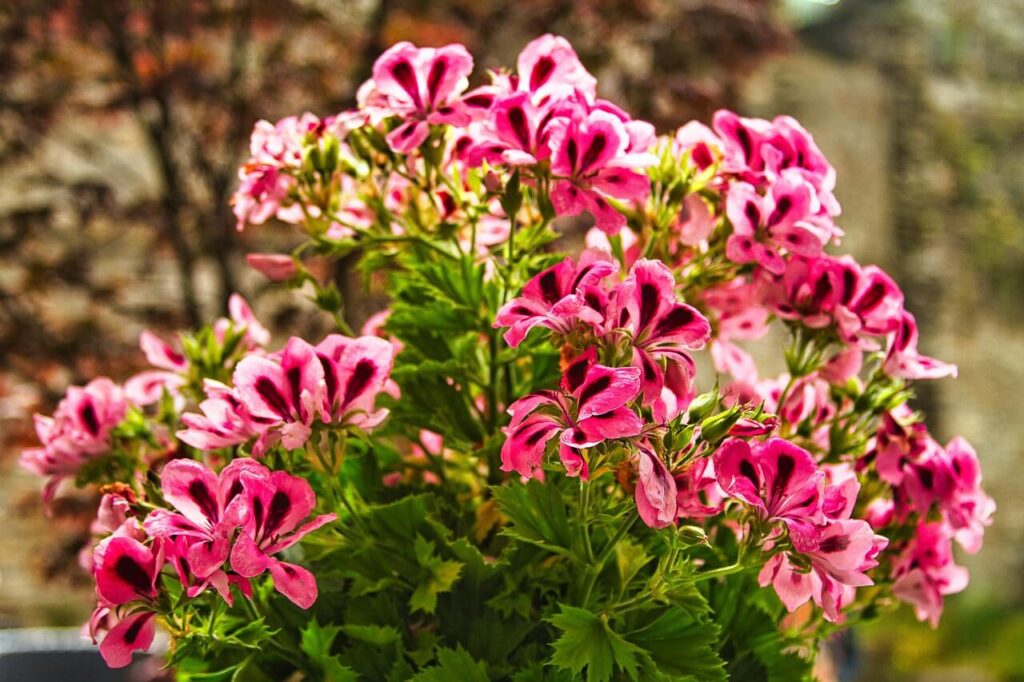
Sweet scented geraniums are indigenous to the northern regions of South Africa, Mozambique, and Zimbabwe. Their foliage has a lovely fragrance and they’re also used as herbs or a type of spice.
In some parts of the world, these geraniums are also used in various food products. For example, the leaves are used in making chocolate due for their fragrance. They bloom in white or pink in the summer and can have smooth or fuzzy foliage.
Caring for Geraniums
Geranium is a classic bedding house plant and is also good for planting in containers and hanging baskets. Here’s a look at some important factors that need to be taken into consideration when growing geraniums.
When to Plant Geraniums
Geraniums are not cold tolerant so you’ll need to plant them in the warmer months. However, it’s not a good idea to delay planting for too long as this can cause your geranium plants to miss the cool night temperatures in the early spring that stimulate the buddings.
This means that geraniums are best planted in the early spring, from March to May. If you‘re not sure when to start planting, check the temperature of your garden soil. It needs to be at least 60 degrees F (about 15 Celsius degrees) to be ideal for growing geranium plants.
Where to Plant Geraniums
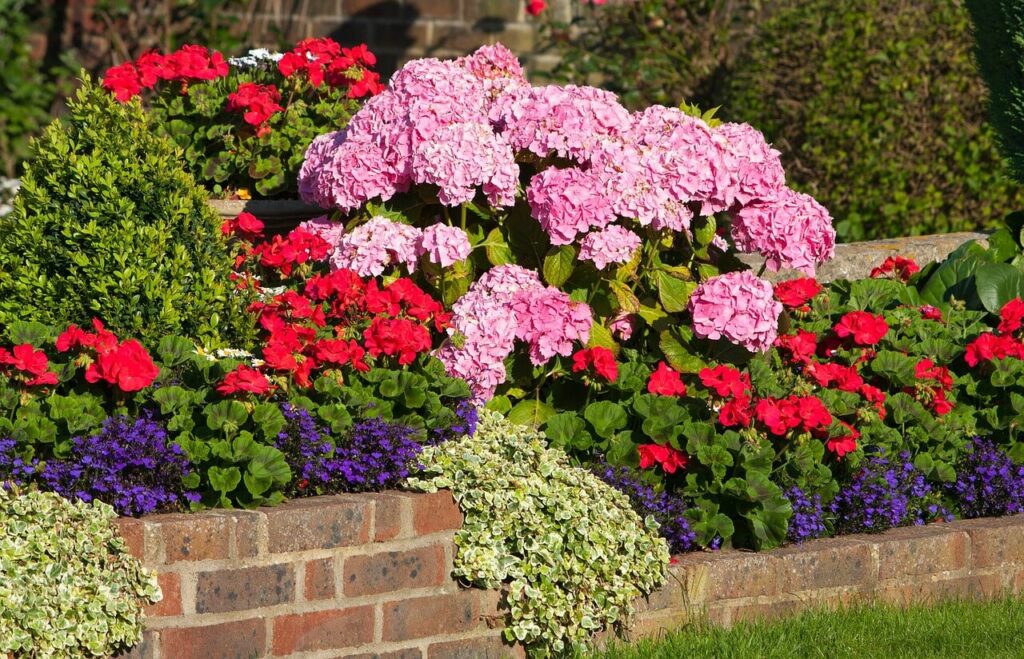
Whether you plant your geraniums outdoors or indoors, it’s important to choose a spot that meets all the ideal growing conditions. Although geraniums love full sun in the day, they prefer shade in extremely hot conditions.
It’s also important to plant them in an area where they can get full sun in the morning and a bit of shade in the afternoon with a good drainage system.
Soil
Geraniums can thrive in various types of soil including acidic, alkaline, and sandy to chalky soils. However, they prefer light, well-drained soil that’s enriched with organic matter. If the soil of the planting site isn’t ideal, you can always mix it with some organic compost, perlite, or peat.
While these plants can also grow in heavy-clayish soils, you may want to avoid planting them in such soil as it could affect their growth negatively.
Sunlight and Temperature
Geraniums are heat loving, draught-tolerant plants that love full sun. Provide them with at least 5 – 6 hours of direct sunlight per day to keep them blooming vigorously. However, in extremely heated climates they need to be kept under the shade in the hottest time of the day. By balancing the exposure to sunlight, your geraniums will grow faster and healthier.
Geraniums thrive at temperatures 50-55 degrees Fahrenheit or above (10-13 degrees Celsius). Anything colder than this, and your plants could die. In the winter, when the temperature starts to dip under 55 Fahrenheit (13 Celsius) your geraniums have to be moved indoors in order to protect them from the extreme cold and frost.
Watering
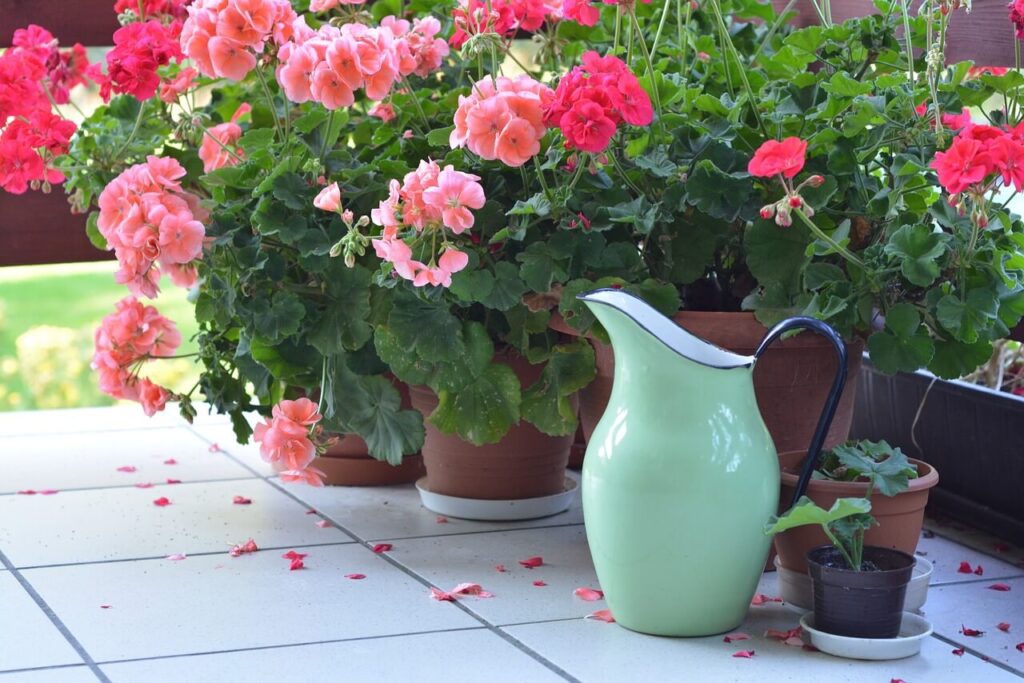
Freshly planted geraniums have to be watered more often than mature plants. Therefore, in the first growing season, it’s important to water them well so that the surrounding soil will be kept moist. Well established geraniums planted in areas with mild and normal climates do not need a lot of water. They can survive with the rainfall and occasional watering.
However, in severe draught climates, check the soil weekly and whenever the 1 inch of the top layer of soil is dry and hard. As it gets colder, gradually reduce the amount of water you provide your plants and completely stop watering in the coldest time of winter.
Fertilizing
The nutritional needs of your geraniums differ depending on where they’re grown. While indoor plants need very little fertilization, those planted outdoors do well with a better fertilizing regimen during the growth and production seasons.
If your geraniums are grown indoors with a proper mix of nutrient and rich soil, there’s no need to add any fertilizer until they get well established in their pots. When the growing season begins after 2-3 months of planting, use a water-soluble fertilizer.
Feed the plants once every 4-6 weeks in the spring and summer. In the winter and fall, reduce this amount to once in every 8 weeks. If you’re using a water solvent fertilizer, mix with the correct ratio of water which is about one gallon of water for every 2 tablespoons.
For geraniums that are grown outside, use a dry, all-purpose fertilizer that includes phosphorous, nitrogen, and potassium to increase the growth and the blooming. Additionally, in the heavy rainy seasons, feed them with a nitrogen rich, slow-release fertilizer.
This will give them a constant supply of nitrogen which is important since rain can cause the nitrogen in the soil to drain away and leaving the plants malnourished. Also give them with a bit of rich organic compost once in a while as this will give that extra boost for them to flower and flourish better.
Pest and Disease Control
Although geraniums are known for their tolerance and hardiness, there are still some pests and diseases that pose a threat to them. However, with proper care and maintenance, many of these infestations and infections can be controlled easily.
Pest Infestations
Geraniums attract many common garden pests including the following:
- Thrips
- Spider mites
- Aphids
- Mealy bugs
- Whiteflies
- Greenflies
- Weevils
- Cottony cushion scale
- Cyclamen mites
- Foliage-eating caterpillars
If your plants are infested, you’ll be able to see most of these pests with your naked eye. It’s also easy to notice it because different parts of the plant will be distorted, discolored, and have holes or spots in them.
In the very first stages of infestation, you can just simply handpick the most of these insects to remove them. If the infestation is already out of control, use a stream of water to wash them off the plants completely. Then, spray the plants with a recommended and approved pesticide to prevent the relapse of infestation.
Diseases
Geraniums are susceptible to the following plant diseases: rust, crown gall, gray mold, roots and stem rot, and bacterial, viral, and fungal infections. These diseases can be caused due to over- or under-watering and even fertilizing so. You can control or even prevent these diseases entirely by caring for your geraniums.
The signs and symptoms can differ according to the disease. However, the common and identifiable ones include:
- Discolored spots and patches on the leaves
- Mold and pus on the stems, foliage or any other part of the plant
- Rotting and decaying of stems and roots
The first thing to do is to remove all the infected parts of the plants, separating them from the good ones to stop the infection from spreading further. Then, burn or burry these removed parts or plants and remember never to use them in your compost. Finally, use a suitable fungicide to spray the plants and around them to kill the remaining spores in the atmosphere and the soil.
Pruning and Deadheading
Pruning and deadheading (the process of removing dead flower heads from the plants) are two very important steps that will help your geraniums grow quickly and healthier. Remember to prune your plants in August to late October (after the blooming season), as it will will keep them dormant throughout the winter season. As a result, it will help them to save their energy for the next spring. Use a good pair of shears to prune your plants, leaving the nodes as new growth points.
Start the deadheading process when the blooms begin to appear and repeat once every two weeks until the end of the blooming season. To deadhead geraniums correctly, it’s not just enough to remove the wilted flowers on the top. You should go deeper and remove the stem from just below the joint or its node to stimulate new growth and flowering.
You can simply snap them with your hands or use a sharp pair of shears to do this. If you don’t deadhead your geraniums on time, it can affect the blooming and even stop entirely.
Overwintering
Unlike many other flowering plants, geraniums can survive for some time without any soil or growing medium since their stems are thick and similar to succulents. Their ability to survive without soil makes it easy to protect them from the harsh, cold weather conditions in the winter season which comes in handy (or can be used) in “the process of overwintering”.
The first thing to do is to dig up your geraniums before the frost starts to appear and remove the remaining soil from the roots. Then, store them in a cool and dark place with a temperature of 45-50 Fahrenheit (7-10 Celsius), by hanging them upside down or placing in open paper bags.
Remember to monitor your geraniums regularly, checking for dry stems and soaking the roots in the water for 1-2 hours before restoring them. In late March or early April, start replanting and repotting your geraniums in nutrient-rich soil. Water them well and remember to trim any dried stems. It’s also important to make sure that they get enough sunlight.
Wrapping Up
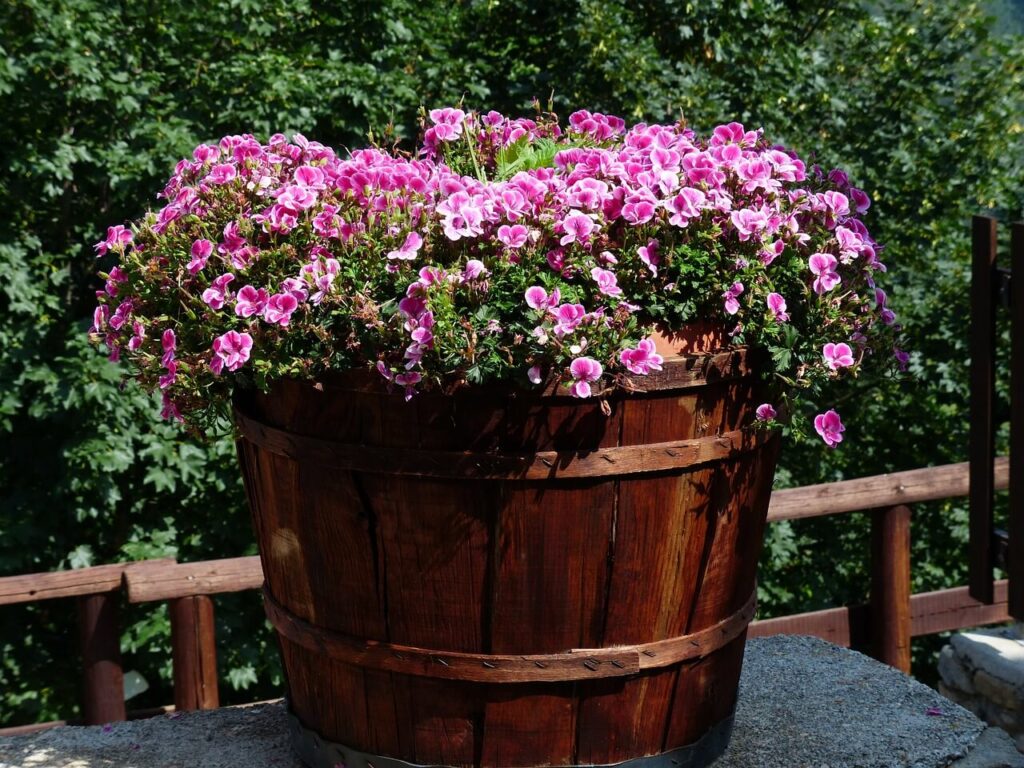
As you can see, the growing conditions and the way you should care for geraniums can differ based on where and how they’re planted. Geraniums are much loved for their beautiful appearance and the fact that they’re vibrant, low-maintenance plants makes them an excellent choice for any beginner gardener.




